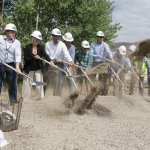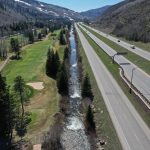Seeding for snow remains cloudy issue
Following a ten-day extension at the beginning of April, cloud seeding is over for the year. Given the near-normal snowpack and lingering questions about the effectiveness of spewing silver iodide particles into the atmosphere, some people say it’s hard to tell whether the program was effective or not, but proponents claim it was a successful season.The original state authorization for this year’s program expired at the end of March, but the extension issued by the director of the Colorado Water Conservation Board enabled Larry Hjermstad to fire up his 25 ground-based generators in Summit and Grand counties several more times early this month. Hjermstad owns Durango-based Western Weather Consultants and has run cloud-seeding operations around the state for many years, including for Vail Ski Area, which has been seeding for about 15 years.As its name implies, cloud-seeding is an effort to provide seed material for ice crystals. Introducing tiny particles into the cold, moist air helps wring out more of the available water vapor in the form of snow, operators claim.This past winter, cloud-seeding efforts were widespread across the state. In fact, a map on the Colorado Water Conservation Board’s Web site shows that state-authorized cloud-seeding programs encompassed most mountain areas, from the San Juans to Gore Range. For Denver Water, the program is slated to continue for four more years under a five-year state permit.Altogether, Hjermstad said that, out of a possible 157-day season, cloud-seeding operations took place on 110 days in this region. “We had something like 30 different seeding operations of one to four days each,” Hjermstad said. “I felt good about the way the weather came in this year. We had good storms out of the west and northwest with operable temperatures and good moisture.”Hjermstad said several “extra” generators around Vail were pressed into service to prep storms as they approached Summit County. For next year, he anticipates running a similar operation. “There are a few more generators we’d like to get installed on a couple of sites that were a little more complicated,” he said.The ground-based burners, situated on private property, are spread around the region strategically to be able to take advantage of various weather patterns. Hjermstad carefully monitors weather and when conditions are right, he alerts the property owners, who then fire up the machines.”If I’m in a self-congratulatory mood, I’ll say the cloud-seeding had something to do with the decent snow pack. If I’m not, I’ll say I don’t know,” said Denver Water chief Chips Barry, acknowledging that it is difficult to determine whether the program works. Denver Water launched the $700,000 effort last fall, hoping to boost precipitation and replenish dusty reservoirs.According to proponents, a 10- to 15-percent increase in snowpack from ground- based winter generators is typical. Winter cloud seeding projects in Colorado have estimated yields of 30 to 50 acre-feet of water per square mile at unit costs varying from less than $1 to $7 per acre-foot of water. An acre-foot is about 325,000 gallons, enough water to cover an acre one-foot deep. By some estimates, a family of four uses about that much water in a year.To measure the effectiveness of this year’s program, Denver Water has hired Utah-based North American Weather Consultants, another company that runs cloud-seeding programs, including an operation in Colorado this winter. Experts with that company will take a close look at data from Snotel sites around the region, comparing moisture content and snowpack levels to determine whether there is a measurable difference in areas affected by the seeding operation. q










